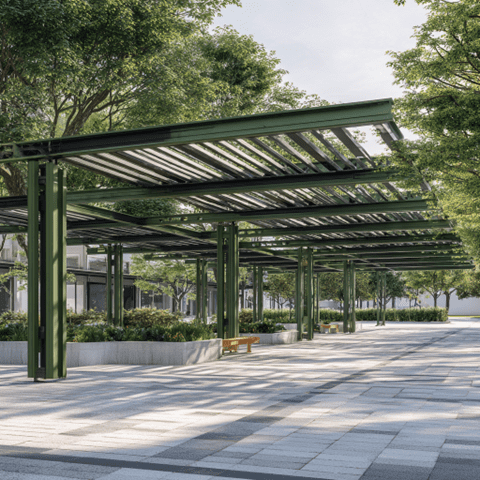Powder coating has become the finish of choice across industries—from construction and mining through to architectural, automotive, and even decorative projects. Its durability, corrosion resistance, and aesthetic appeal make it a standout compared to traditional paints. But like any protective system, the quality of the outcome depends heavily on the process followed.
At Superior Coaters, we’ve seen projects succeed or fail not because of the coating itself, but because of the preparation, application, and ongoing care. If you’re planning a powder coating project, here are five proven ways to ensure the job turns out perfect the first time and lasts for years to come.
-
Start with the Right Surface Preparation
Surface preparation is the single most important factor in the powder coating process. Even the most advanced coating systems will fail if the surface beneath isn’t properly prepared.
Preparation usually involves cleaning, blasting, and pre-treatment:
- Cleaning removes dirt, grease, and oils that can cause adhesion issues.
- Abrasive blasting strips away rust, mill scale, or previous coatings while creating a roughened profile for the powder to grip onto.
- Pre-treatment (like zinc phosphate or chromate conversion) adds an extra layer of corrosion resistance, especially crucial in harsh Queensland environments.
Think of it like building a house—if the foundation isn’t solid, everything above it will eventually crack or crumble. A well-prepared surface is the foundation of a perfect finish.
-
Choose the Right Powder for the Job
Not all powder coatings are created equal. The type of powder chosen should align with the project’s environment, performance requirements, and aesthetics.
Some of the most common powder types include:
- Epoxy powders: Extremely durable and chemical-resistant, but prone to UV breakdown. Best for indoor or non-exposed components.
- Polyester powders: Excellent weather resistance, colour retention, and overall toughness—ideal for outdoor use.
- Epoxy-polyester hybrids: A good compromise between durability and appearance, often used for appliances and interior fittings.
- Fluoropolymer powders: Premium-grade, offering long-term UV stability for architectural projects exposed to constant sunlight.
Choosing the right powder isn’t just about colour—it’s about balancing durability, flexibility, and longevity. Working with a coating specialist ensures you’re not just selecting something that looks good on day one, but a system that will continue to perform under real-world conditions.
-
Ensure Correct Application and Curing
Application and curing are where science meets craftsmanship. The powder needs to be applied evenly, at the right thickness, and cured at the precise temperature for the specified time.
Common mistakes during application include:
- Applying powder too thinly, which compromises protection.
- Applying powder too thickly, which can cause runs, orange peel texture, or poor curing.
- Uneven distribution, leaving some areas exposed and vulnerable to corrosion.
Once applied, the coated piece enters the oven. Curing is critical—the part must reach and maintain the manufacturer’s specified metal temperature (often around 180–200°C) for the right duration. Under-cured coatings can chip or peel; over-curing can cause discolouration or brittleness.
An experienced powder coater will monitor oven temperatures and use calibrated equipment to ensure consistency. At Superior Coaters, our oversized ovens allow us to cure structures up to 14 metres long without compromising quality—a capability that makes a big difference on large commercial or industrial projects.
-
Focus on Quality Control and Inspection
Even with the right preparation, powder, and application, a project isn’t complete until it passes quality control. Inspections catch issues before they become costly problems.
Some key tests and checks include:
- Visual inspection for even coverage, colour consistency, and surface finish.
- Adhesion testing, ensuring the powder has bonded firmly to the substrate.
- Dry film thickness (DFT) testing, confirming the coating is within the manufacturer’s recommended range.
- Cure testing, ensuring the coating has been baked properly.
Skipping these steps can mean defects only show up months later—when equipment is already in service, or structures are exposed to the elements. By investing in quality control upfront, you save time, money, and reputational damage down the track.
-
Plan for Maintenance and Longevity
Powder coating is highly durable, but it’s not invincible. A perfect project doesn’t stop at installation—it includes planning for maintenance.
Simple maintenance practices include:
- Regular washing with mild detergent to remove dirt, salt, and pollutants.
- Routine inspections to spot chips, scratches, or corrosion early.
- Touch-ups or recoating in areas showing wear, preventing localised damage from spreading.
In coastal or industrial environments, more frequent care may be required due to higher exposure to salt spray, chemicals, or abrasive dust. Having a tailored maintenance plan extends the lifespan of your investment and keeps structures looking and performing like new.
Bringing It All Together
A flawless powder coating project doesn’t happen by chance—it’s the result of following proven steps from start to finish. By focusing on:
- Proper surface preparation,
- Selecting the right powder system,
- Achieving precise application and curing,
- Conducting thorough quality inspections, and
- Planning for long-term maintenance,
you can ensure your project achieves the durability, appearance, and performance that powder coating is known for.
At Superior Coaters, we combine decades of expertise with one of Queensland’s largest coating facilities to help clients achieve exactly that. Whether it’s an oversized industrial structure, an architectural project with exacting aesthetic demands, or a one-off component that needs the highest level of protection, our team has the knowledge, equipment, and processes to deliver a perfect finish every time.
Final Word
The value of a powder coating project lies not just in how it looks on day one, but in how it performs over its lifespan. When you follow these five steps—and partner with a trusted coating specialist—you’re setting your project up for long-term success.

 07 3375 6777
07 3375 6777